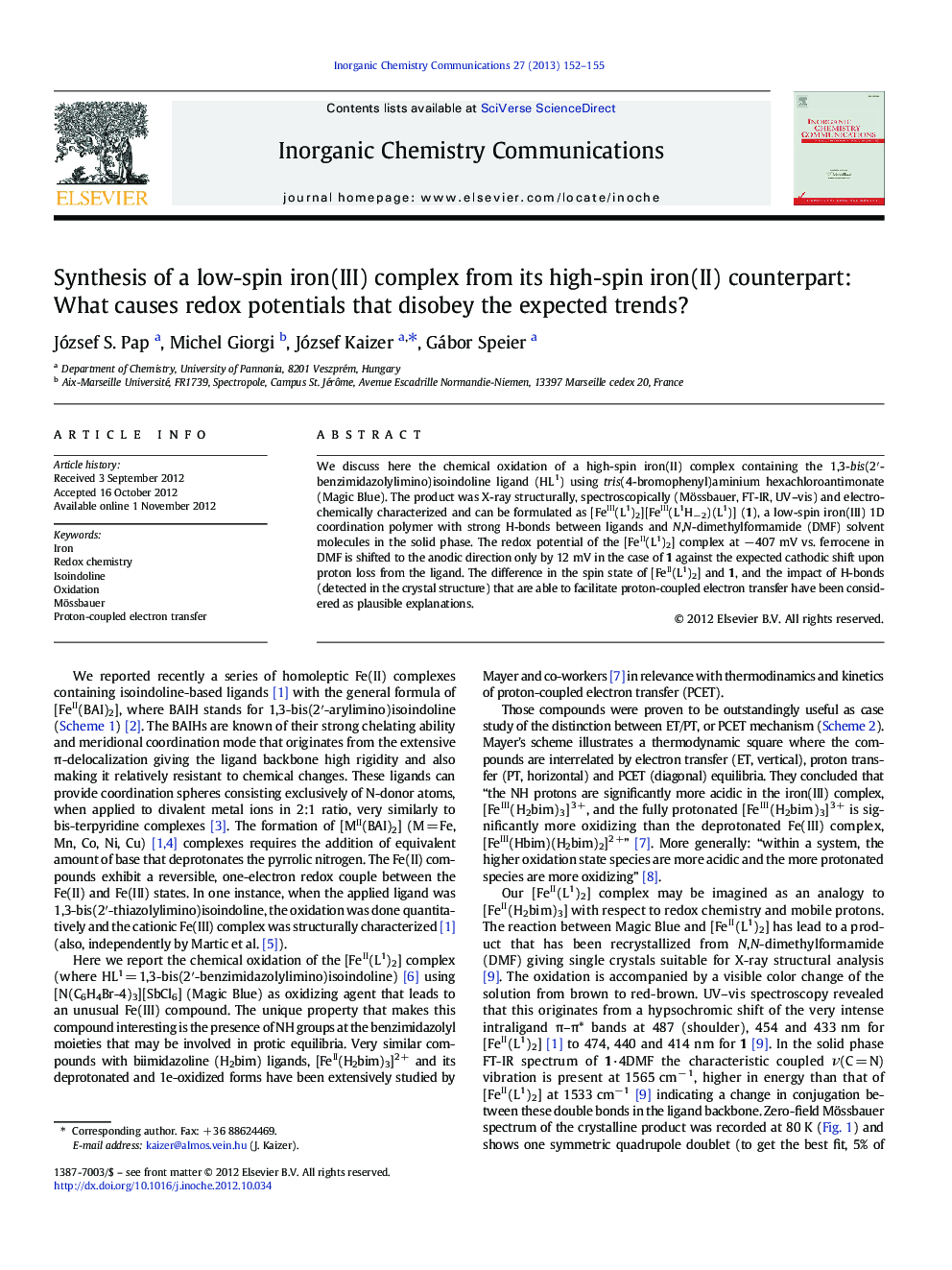| کد مقاله | کد نشریه | سال انتشار | مقاله انگلیسی | نسخه تمام متن |
|---|---|---|---|---|
| 1305590 | 1498963 | 2013 | 4 صفحه PDF | دانلود رایگان |

We discuss here the chemical oxidation of a high-spin iron(II) complex containing the 1,3-bis(2′-benzimidazolylimino)isoindoline ligand (HL1) using tris(4-bromophenyl)aminium hexachloroantimonate (Magic Blue). The product was X-ray structurally, spectroscopically (Mössbauer, FT-IR, UV–vis) and electrochemically characterized and can be formulated as [FeIII(L1)2][FeIII(L1H− 2)(L1)] (1), a low-spin iron(III) 1D coordination polymer with strong H-bonds between ligands and N,N-dimethylformamide (DMF) solvent molecules in the solid phase. The redox potential of the [FeII(L1)2] complex at − 407 mV vs. ferrocene in DMF is shifted to the anodic direction only by 12 mV in the case of 1 against the expected cathodic shift upon proton loss from the ligand. The difference in the spin state of [FeII(L1)2] and 1, and the impact of H-bonds (detected in the crystal structure) that are able to facilitate proton-coupled electron transfer have been considered as plausible explanations.
High-spin to low-spin change upon 1e-oxidation and ligand deprotonation of a Fe(II) complex to the Fe(III) counterpart are involved in shift of E°′ value against the expected trend.Figure optionsDownload as PowerPoint slideHighlights
► Deprotonation of the ligand upon oxidation of an octahedral, high-spin Fe(II) complex.
► Spin state changes to yield low-spin Fe(III) 1D coordination polymer (solid phase)
► ΔE°′ and ΔpKa shift against expected trands.
► H-bonds (PCET) and change in spin state are plausible explanations.
Journal: Inorganic Chemistry Communications - Volume 27, January 2013, Pages 152–155